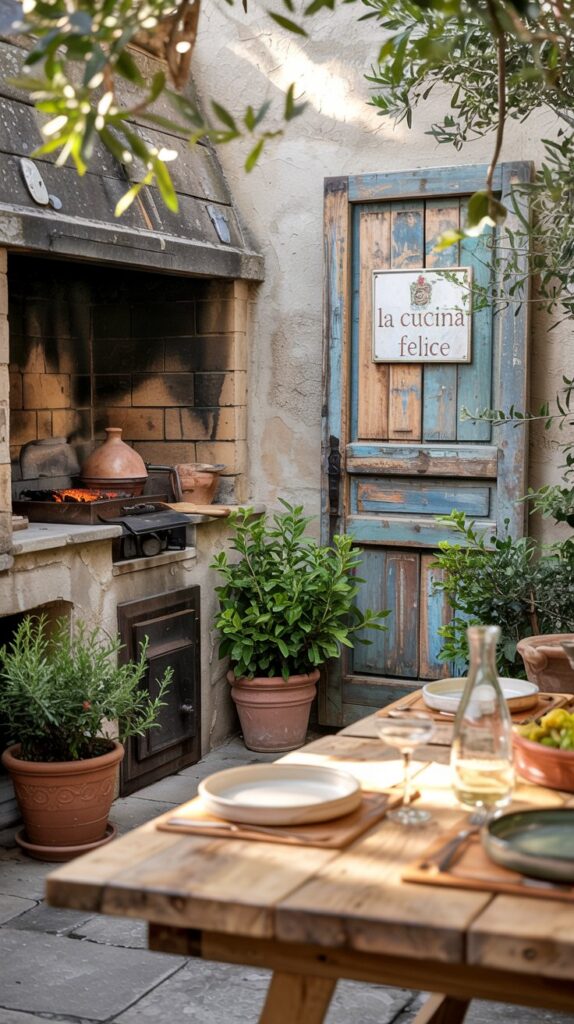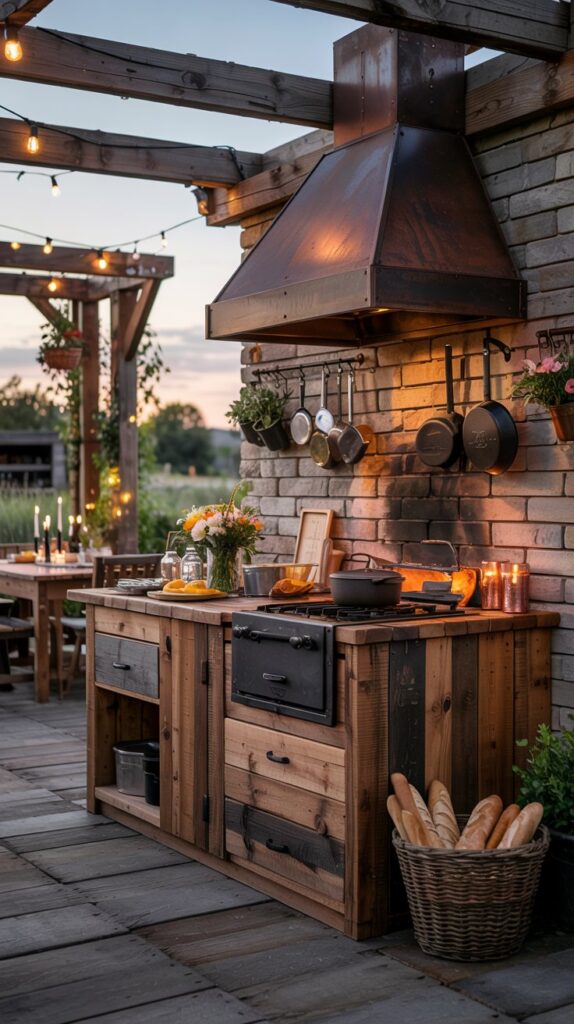Have you ever imagined the warmth of a rustic outdoor kitchen gracing your backyard? The charm and coziness of a rustic style can transform any outdoor space into an inviting area perfect for entertaining friends and family. Whether it’s the allure of natural materials or the charm of vintage furniture, a rustic outdoor kitchen is all about creating a relaxing, homey environment. Let’s walk through some inspiring design ideas that can help you craft the perfect rustic outdoor kitchen.
Understanding Rustic Design
Before diving into the specifics, it is essential to understand what constitutes rustic design. This style primarily emphasizes simplicity, warm tones, and natural materials, creating an organic and inviting atmosphere. The goal is to establish a connection with nature, often through the use of wood, stone, and earthy colors. You’ll find that imperfections and rugged textures are celebrated rather than concealed, giving rustic spaces a unique, welcoming feel.
Incorporating Natural Materials
Natural materials are the heart and soul of rustic design. Think of wood, stone, and metal as your best allies in achieving this look. When designing your outdoor kitchen:
- Wood: Opt for reclaimed or weathered wood for cabinets, tables, or seating. Its imperfections add character and charm.
- Stone: Consider a stone veneer for the kitchen island or backsplash. It adds a robust, earthy appeal.
- Metal: Iron or copper accents in light fixtures or door handles add an industrial touch that complements rustic aesthetics.
Choosing Earthy Tones
Rustic design favors a color palette that echoes the natural world. When selecting colors:
- Warm Colors: Browns, beiges, and taupes create a cozy atmosphere.
- Contrast with Cool Tones: Soft greens and blues add depth and contrast to warm shades.
- Accent Colors: Use muted reds, oranges, and yellows to provide pops of color.
This natural color scheme will enhance the overall rustic feel of your outdoor kitchen, making it more inviting.
Open and Airy Layout
A rustic outdoor kitchen benefits from an open layout that encourages social interactions. Here’s how to plan it:
- Central Island: Acts as both a workspace and a social hub.
- Plan for Movement: Ensure there’s plenty of space to move freely while cooking and entertaining.
- Defined Zones: Designate areas for cooking, eating, and relaxing to ensure efficient functionality.
Creating an open and airy space with defined zones helps maintain the rustic charm while enhancing usability.
Antique or Vintage Furniture
Furniture is pivotal in setting the tone for your rustic outdoor kitchen. Look for pieces that bring character and history into the space, such as:
- Reclaimed Dining Tables: A large wooden dining table can be the centerpiece of your outdoor kitchen.
- Vintage Seating: Antique chairs or benches with worn finishes offer an authentic rustic appearance.
- Distressed Accents: Furniture with a weathered look adds to the rustic charm and feels more inviting.
The fusion of new with old adds a timeless quality that defines rustic design.
Utilitarian Accessories and Decor
Rustic design often incorporates items that are both beautiful and functional. Select decor that serves a purpose:
- Open Shelving: Provides easy access to dishes and utensils while adding visual interest.
- Hanging Pot Racks: A practical way to store cookware while lending a farmhouse feel.
- Gardening Tools: Well-placed, they can act as decor and conversation pieces.
These utilitarian elements ensure that every piece contributes to the rustic environment while serving a genuine function.
Fire Features for Warmth and Ambiance
A fireplace or fire pit can be the heart of your outdoor kitchen, offering warmth and a focal point:
- Outdoor Fireplace: A stone or brick fireplace provides a classic rustic element.
- Fire Pit: Surrounded by comfortable seating, it invites guests to gather around.
- Portable Heaters: Use them discreetly to extend usability into cooler months.
Fire features not only enhance ambiance but also serve as a cozy gathering spot.
Sustainable and Recycled Elements
Sustainability is often interwoven with rustic design, emphasizing repurposed materials:
- Recycled Wood: Use it for countertops or cabinetry to reduce environmental impact.
- Old Windows and Doors: Repurposed as decorative features, they add character.
- Reclaimed Metal: Incorporate in fixtures or structural elements for an industrial touch.
These sustainable choices not only support the environment but also enhance the rustic charm of your outdoor kitchen.
Creating a Green Oasis
Integrating plants and greenery can amplify the rustic vibe by bringing shades of green into your outdoor kitchen:
- Potted Herbs: Ideal for cooking and adds a burst of natural fragrance.
- Climbing Vines: Encourage them on pergolas or trellises to blend seamlessly with the architecture.
- Native Plants: Enhance the natural look while requiring less maintenance.
Including greenery creates a sense of serenity and helps connect your space with the surrounding environment.
Weathered Surfaces and Finishes
Incorporating weathered surfaces can further enhance the rustic aesthetic:
- Distressed Wood: Perfect for flooring, countertops, and furniture.
- Rusted Metals: Use as accents or for outdoor ornaments.
- Chipped Paint: Aged finishes add character and a sense of history.
These surfaces contribute to a lived-in charm that is the essence of rustic design, making your outdoor kitchen feel timeless and cozy.
Conclusion
Designing a rustic outdoor kitchen is about creating a space that feels both inviting and functional. By embracing natural materials, earthy tones, and vintage elements, you can craft a kitchen that reflects your personality and lifestyle. Remember, a rustic kitchen is not about perfection; it’s about warmth, comfort, and bringing the beauty of the outdoors in. As you embark on your design journey, consider these ideas to create a space that is uniquely yours and perfectly suited for memorable outdoor gatherings.

